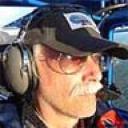Yahoo Answers is shutting down on May 4th, 2021 (Eastern Time) and the Yahoo Answers website is now in read-only mode. There will be no changes to other Yahoo properties or services, or your Yahoo account. You can find more information about the Yahoo Answers shutdown and how to download your data on this help page.
Trending News
Measuring accurate time?
The Danish astronomer Ole Rømer noted the eclipses of Jupiter's moons, in order to create a "cosmic clock" that would enable seafarers to find their longitude. It works like this: If you know when the eclipse will occur at a place of reference (like, the Greenwich prime meridian) knowing your time gives you the Greenwich Hour Angle and ... you longitude!
But the tables had to be written as time (Greenwich, Paris or Copenhagen) and ... how did Rømer and his collegues worked that out in the 17th century when we know that it was only at the end of the 18th century that John Harrison made the first marine chronometer that had some accuracy. Actually, his clock made the Jovian moon tables completely obsolete but that's another story.
My question is, how were they able to write time tables ... without accurate time recording instruments? Yes, seafarers used the north star and pointer as a celestial clock but not to the accuracy needed to find a longitude where five seconds of time would put you off one mile!
3 Answers
- ?Lv 78 years agoFavorite Answer
Interesting question!
The answer is that they did have very accurate pendulum clocks in the 17th century, and used observations of transits of stars to calibrate them. What they lacked was _portable_ clocks. A pendulum clock is great when you're on solid land, but hopeless on the tossing deck of a small sailing ship! Harrison developed the marine chronometer so that mariners would be able to retain accurate time synchronized with the clocks i Greenwich, and then use this time to measure the offset in the times of Jupiter's satellite phenomena, thus calculating their ship's true longitude.
In practice, this didn't work well because it's impossible to time satellite events with sufficient accuracy, even on solid land, let alone from the deck of a small ship at sea. But, once they had accurate time aboard a ship, they could make simpler observations of the Sun and Moon, and use these to calculate longitude.
It's interesting to visit the great national observatories, such as Greenwich and Sydney (two which I've visited personally). They have two major components: a transit circle (telescope mounted on the meridian, adjustable only in altitude) and an extremely accurate clock. Actually, several extremely accurate clocks, which are constantly calibrated against each other.
A third feature is usually a large ball, which drops at exactly noon, visible from the nearby harbour. The navigators on the ships in the harbour use this to calibrate their own chronometers. Initially they tried firing a cannon, but this was inaccurate because of the slow travel time of sound. A visual signal proved much more accurate. Both Greenwich and Sydney observatories are built atop high hills, so that their "time signal" is visible over a wide area.
Source(s): Dava Sobel: Longitude <= This is a great read! Highly recommended! - John WLv 78 years ago
If you take a look at the courses they navigated, they basically picked a latitude and sailed along it so that they wouldn't need the longitude, at least not accurately. Most celestial navigation is done at sunset, sunrise or noon which can be identified accurately. Also inaccurate time pieces can still be accurate enough if regularly synced to an astronomic event such as sunrise, sunset, etc. Indeed, that's how most of our clocks are synchronized to the atomic clocks, periodically.
I find the eclipses of Jupiter's Moons, an unlikely source for celestial navigation. Why use such high powered telescopes when you have millions of stars whose rise and set times with the horizon could be tabled and interpolated. Note that celestial navigations are typically with a sextant or astrolab type device, not a telescope, they sight the stars with the naked eye.
- ?Lv 58 years ago
Sand timers ( hourglass) Compass, Astrolabes, Kamals, Cross staffs, quadrants, Nocturnals
http://en.wikipedia.org/wiki/Iberian_nautical_scie...
http://www.mat.uc.pt/~helios/Mestre/Novemb00/H61if...
.
I fully expect you already know all of the above, but I couldn't resist the chance to mention the Sunstone.
Long spoke of as mythical, I do believe the find below helps to confirm their existence :
"Medieval Sunstone found in Alderney amid the wreckage of a 16th-century warship" early 2013
http://en.wikipedia.org/wiki/Sunstone_(medieval)
.
All the best


